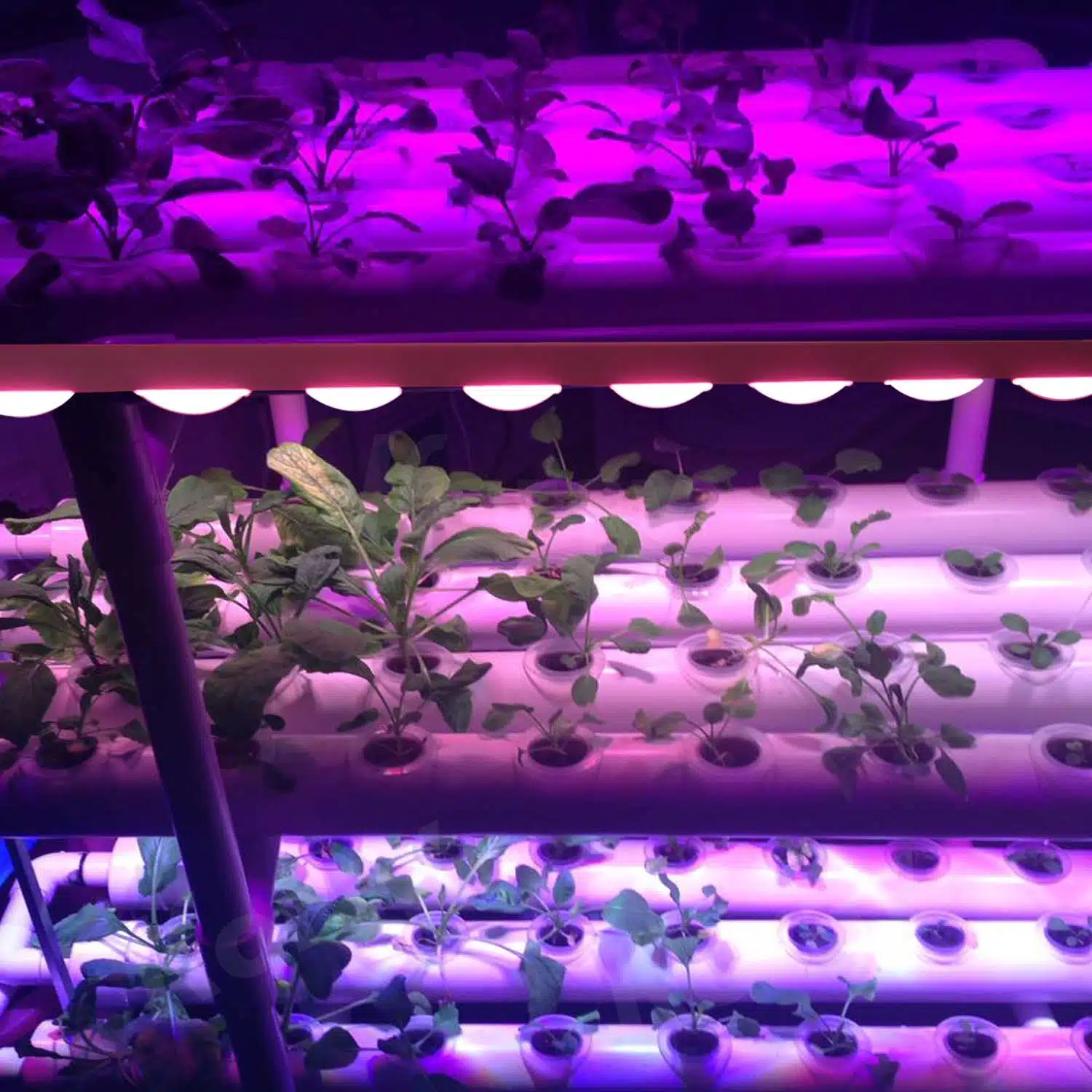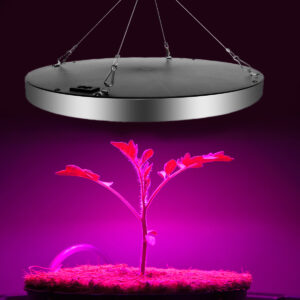Grow lights are extremely important to ensure proper plant growth. If your plants are never exposed to the amount and wavelength of light they need, they will never begin to grow large and healthy. Hif the plants are in a place with minimal natural light, is kUneven light is especially important to ensure plant growth. In this article you can find out exactly which type of grow light you need.
Table of contents
ToggleArtificial plantkst light promotes plant growth in several different ways
When choosing the right LED grow light lamp your plants will get all the light they need.
Plant lights supplement sunlight, especially in the dark winter months when daylight hours are short.
By increasing the length of the "day" via artificial light, you can trigger a specific and increased growth and/or flowering.
Here are several reasons to choose LED plant lights:
- You don't have an easily accessible sunny window with room for plants.
- You have a kitchen window that gets good sun in the summer, but very little sun in the winter.
- You want to sprout your vegetables using artificial light.
- You have a greenhouse or orangery where you would like to have fast-growing and budding plants.
- Growing under artificial light gives you flexibility in terms of possibly limited space and growth rates are not affected by season.
- LED plant lights can also be used to quickly grow vegetables, fruit and flowers in very short periods of time. e.g. tomatoes, strawberries, etc.
Advantages of artificial grow light with LED
Operating costs
One of the most important advantages of using LED grow lights is the lower operating costs. LED recessed bulbs and lamps use up to 90% less energy than comparable fluorescent tubes and HPS lamps. LED grow lights can be used as either a primary light source or as supplementary light, and the investment will pay for itself after about 6 months. The expected lifetime of an LED grow bulb is up to 50,000 hours. This is up to 50 times longer than typical fluorescent tubes and incandescent bulbs.
Purchase costs
Although purchasing costs of LED grow lights can be higher than with fluorescent tubes and sodium lamps, the real costs are often lower, partly because you do not need a ballast which also causes energy loss. Unlike fluorescent and metallic vapor lamps that need a ballast to work, LED grow lights do not need a ballast. You also don't have to pay extra for the purchase of a reflector, as the grow light's LEDs typically have built-in reflectors.
Season of growth
As chlorophyll in plants, illuminated with efficient LED grow lights, are not exposed to the light waves that it cannot utilize, LEDs can be used up to 24 hours a day, without your plants being overloaded. You can also use LED grow lights to simply extend the daylight period by 4-6 hours during the winter months. This will extend your plants growing season to 365 days a year.
Benefits for the environment
By switching to LED lighting with a low energy consumption, you are helping to protect the environment. And since LED has a low energy consumption, these light sources are even ideal for solar or self-powered systems, especially in remote areas without a connection to a fixed 230V supply. LEDs consume far less energy than normal light sources for plants, leading to reduced energy costs.
The production of LED light-emitting diodes for plant light lamps also requires far less energy than the production of all other conventional light sources, which further limits their environmental impact. Broad spectrum artificial lights such as metal halide (MH), high pressure sodium (HPS) and fluorescent lights produce a lot of light waves that plants cannot use effectively. Where LED grow lights only deliver the part of the spectrum that plants can absorb for efficient and healthy growth.
Minimum heat
LED grow lights are not very hot to the touch and will not burn your plants as other light sources can easily do. The high heat that is typically given off by a halogen lamp or high-pressure sodium lamp can, on the surface of the lamp, reach many hundreds of degrees Celsius. This large excess of radiated heat contributes to increasing the ambient temperature, which can stress your plants. Most LED grow lights operate at just a few degrees above room temperature, thus reducing cooling costs and the stress on the plants.
Irrigation
Due to the LED plant light's low working temperature, it will not be necessary for the plants to evaporate as much water as they otherwise would in warmer conditions, which reduces your water consumption and gives healthy plants.
Humidity
LED grow lights are ideal for tropical plants such as Monstrea and ferns, or other plants that need high humidity.
Briefly, the advantages of LED grow lights are:
- No or very little heat generation
- No heat radiation (IR) which can burn plants
- Lower electricity bill
- Less water consumption
- Fast growth of the plants
- Environmentally friendly cultivation
- Much longer life for your lamps and plants
Which grow light do you need?
First of all, the red and blue wavelengths are needed for good plant growth. It is well known that chlorophyll, which is contained in the green leaf of plants, carries out photosynthesis. Red and blue are therefore wavelengths which are most decisive for photosynthesis, although with a predominance of red wavelengths. The plants absorb the blue light between 430-450 nm and the red between 650-670 nm. However, this only applies to plants that have a layer of leaves (cotyledons – the first leaves that form when a plant seed germinates). After this, you should switch over to lamps that also contain the green wavelengths.
- Newer research shows, however, that the ideal grow light must also contain green and slightly infrared (NIR) wavelengths in order to get strong plants, in many places it is referred to as full spectrum light (White+red light). All major manufacturers of grow lights have already adopted this knowledge, which therefore primarily produces white light lamps. Read more about how much light plants need
Red grow light
Red light is at the top of a plant's light absorption spectrum (660nm), and it contributes significantly to photosynthesis. When red light is combined with blue light, flowering is encouraged. It can also be used in higher doses to stimulate flowering, seeding and fruiting. However, the pink light is not suitable for larger plants, because it is most efficient to use the large plants full spectrum grow light.
Blue grow light
Blue light is ideal primarily for vegetative growth (leaves) and preventing plants from stretching too much. Chlorophyll has been proven to have another distinct absorption region near the blue wavelengths (450 nm). The blue light is therefore also necessary for morphologically healthy growth. And that there is also a higher content of light energy in the blue-green wavelengths.
Green grow light
Many sources on the Internet indicate that plants do not use the green wavelengths in daylight, this is a huge oversimplification of the plants' light needs. It is correct that chlorophyll's absorption spectrum is strongest around the blue and red wavelengths, but most plants still need the green wavelengths to thrive, as these wavelengths penetrate further into the leaves and down the plant. This way you reduce the risk of getting burnt top shoots on the plants, and the plant gets stronger stems and faster growth.
Broad-spectrum grow light - white daylight
Together, the blue, green and red light, as is known, produces white light, also known as broad spectrum or full spectrum grow light. The most efficient and cheapest way to make broad spectrum/full spectrum light for plant growth is to use efficient white LEDs, preferably a combination of cold and warm LEDs, with some 660nm and 730nm LEDs added to boost growth and flowering.
At plantelys.dk, we can offer both LED grow lights and grow light, that are absolutely ideal for giving your plants the best possible conditions for growth in your horticulture, greenhouse, orangery or indoor year-round growth.






